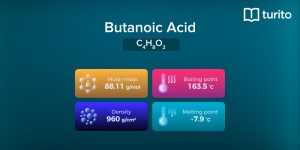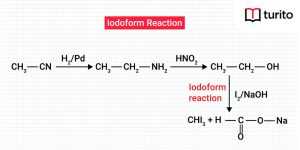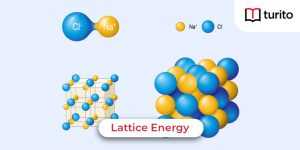Nitrite, abbreviated as N, is a chemical element with the atomic number 7. It is a nonmetal member of the periodic table’s 15th group. The human body comprises 3% nitrogen by mass. It is the largest amount of any element present in the earth’s atmosphere (78%). Nitrogen is a colourless, odourless gas that is extremely crucial to the chemical process industries.
The principal applications of nitrogen include the production of fertilizers, dyes, nitric acid, nylon, and explosives. Oxygen, abbreviated as O, is a chemical element with the atomic number 8. It is a member of the periodic table’s 16th, second, and chalcogen groups. Oxygen can be termed as an extremely reactive nonmetal.
It is the most prevalent element on earth and is present in various organic molecules, including rocks, mineral deposits, and water. It is a diatomic gas that makes up 21% of the atmosphere and is colourless, tasteless, and odourless. It is widely utilized in industry and necessary for practically all combustion and aerobic respiration.
In detail, let’s discover more about nitrite ion, a molecule made of nitrogen and oxygen.
Nitrite
Nitrite is an inorganic ion with a negative charge. It has two oxygen atoms and one nitrogen atom. Because of its negative charge, it is also known as a nitrite ion or nitrite anion and is exceedingly unstable. It has a symmetrical structure and appears crystalline or colourless.
It is common to use nitrite to bond with metal in various ways. It is a part of many salts, including sodium and potassium nitrate. The typical nitrite concentration in drinking water is less than 0.1 mg/l. Nitrites are primarily found in vegetables and cured meat, while they can also be found in minor amounts in fish and milk products.
Nitrite Formula: Molecular Formula
Nitrite ions have the chemical formula NO2-with the molecular weight of 46.005 g/mol.
Nitrite Ion: Structural Formula

Interesting Facts:Nitrite Lewis Structure: What is it?Lewis structures, commonly referred to as Lewis dot diagrams, depict the interactions between a molecule’s atoms and any potential pairs of electrons present.
In the nitrite lewis structure, nitrogen has 5 valence electrons. In contrast, oxygen has 6, but since we have two oxygen atoms, we’ll multiply that number by two, plus one for the valence electron present. Thus, making a total of 18 valence electrons for nitrite ions. |
Nitrite Ion: Properties
1.Nitrite’s Physical Properties
- Nitrite has a molecular mass of 46.005 g/mol.
- It is symmetrical in construction.
- It has a 115° bond angle.
2.Nitrite’s Chemical Properties
- Nitrite ion is an example of a Lewis base, and nitrous acid is its conjugate acid.
- Due to its single negative charge, the nitrite ion can become exceedingly unstable in specific situations.
- For instance, we might see that consuming sodium nitrite can cause a chemical notarization in people.
- Nitrite (potassium nitrite) is a white deliquescent solid with melting and boiling temperatures of 440°C and 537°C.
3.Acid-Base Properties
Nitrite is a compound base of the weak nitrous acid.
HNO2 <==> H+ + NO2-
Due to its single negative charge, the nitrite ion can become exceedingly unstable in specific situations. Additionally, nitrous acid is quite explosive. In terms of the proportionate reaction, it is unstable in solution.
3HNO2 <==> H3O+ + NO3– + 2NO
4.Oxidation-Reduction Properties
Oxidation and reduction reactions with nitrite ions can create numerous compounds. For instance,
- The byproducts of Sulphur dioxide are NO and NO2.
- By combining hydrogen sulphide, it creates NH3
- Nitrite is reduced to acid HN3 by the hydrazinium cation, a volatile and explosive molecule.
HNO2 + N2H5+ ⇢ HN3 + H2O + H3O+
The basic oxidation state of the nitrogen atom in nitrite is +3. It indicates that it can be reduced to levels as low as 3 or oxidized to +4 or +5. The nitrite ion is often produced by oxidation processes when the nitrogen is in the oxidized state of +5. For instance, permanganate ion oxidation can be utilized as,
5NO2– + 2MNO4– + 6H+ ⇢ 5NO3– + 2MN2– + 3H2O
Sodium NitriteSodium nitrite (NaNO2) is white to slightly yellowish powder. It is extremely soluble in water and eventually reduced to sodium nitrate by airborne oxygen (NaNO3). It serves as a colour fixative and preservative in fish and meat. Sodium nitrite is a food preservative used to make meat redder. Because sodium nitrite can undergo chemical interactions that produce nitrosamines, which are recognized carcinogens, many dietitians advise avoiding products with sodium nitrite. In addition, sodium nitrite is employed in producing rubber compounds, textile dyeing, metal coatings, photography, and fiber bleaching. Medicine has utilized it as a bronchodilator, vasodilator, and laxative or intestinal softener. Amyl nitrite and sodium nitrite can also treat heart disease and cyanide poisoning. |
Nitrites and Nitrates: What are they?
Nitrate (NO3)
Nitrate is a chemical compound obtained by combining nitrogen and oxygen. Nitrate concentrations are often high in drinking water. Nitrate has no flavor, no aroma, and no colour. Since nitrate occurs naturally in low concentrations and is extremely soluble in water, soil can easily transfer it to groundwater.
Nitrite (NO2)
Nitrite is a chemical compound obtained from salt or an ester of nitrous acid. Although it is typically undetectable or detectable in groundwater to a much lesser extent since it is easily converted to nitrate, nitrite (NO2)is a comparable pollutant with similar qualities to nitrate that is connected with and the forms of nitrate.
Now, let’s compare their differences to comprehend the two compounds’ relationship fully. The presence of oxygen in the two compounds makes a difference. Nitrite consists of two oxygen atoms, having the chemical formula NO2, while nitrate consists of three oxygen atoms, having the chemical formula NO3-
.
Nitrite vs Nitrate
Nitrates and nitrites are somewhat related to one another. They are close to one another. The other is merely the other transformed by specific salivary glands and germs. According to studies, both are equally harmful to health. Experts conducted a test to check the number of nitrates present in vegetables and meat.
The test revealed that vegetables contain more nitrates than processed meat. On the positive side, utilizing antioxidants like Vitamin E and Vitamin C during the treatment or preservation process can control the formation of nitrosamines. When nitrates are subjected to intense heat, nitrosamine is produced, which is one of the reasons for diseases. The packaged foods we adore eating are harmful and unhealthy because they are high in nitrates.
Though, nitrate is less harmful than nitrite and is therefore used as a food source by living plants. Nitrates are also included in agricultural fertilizers. The nitrates were transformed into fertilizer friendly sodium, ammonium, potassium, and calcium salts. High fertilizations can also result in eutrophication. According to the definition, eutrophication enhances the ecosystem using chemical nutrients, including fertilizers.
Eutrophication can produce algae, which can cover water sources, cause scarcity, and alter the ecology. Even though it aids in food preservation, providing us with these delicious items and serving as fertilizer for plants, it is nevertheless hazardous to human health. As per studies, this disease-causing substance is a powerful carcinogen. This carcinogen is not only present in food but as well as in water.
Uses of Nitrites
It is used in medicine to treat cardiac conditions, including angina, by acting as a vasodilator, which dilates blood vessels and lowers blood pressure. By triggering the production of methemoglobin, which sequesters cyanide as harmless cyanmethemoglobin, amyl nitrite is also used to cure cyanide poisoning.
Meat and other perishable goods are frequently preserved using nitrite and nitrate salts. In addition to serving to keep food from spoiling, they also work to prevent the growth of toxic germs, particularly Clostridium botulinum, the bacterium that causes potentially fatal botulism.
While nitrates are used to stop some cheeses from ballooning during fermentation, nitrates are added to meat to maintain red and give it richness. Vegetables naturally contain nitrate, particularly green leafy vegetables like spinach and lettuce, having the highest quantities. It can also get into the food chain as an ecological contaminant in water because of its use in intensive farming techniques, livestock production, and sewage discharge.
Conclusion
Under inorganic chemistry, nitrite can be defined as the salt of nitrous acid. Its salt consists of a nitrite ion composed of one nitrogen and two oxygen atoms. While in organic chemistry, nitrite can be defined as the composition of an ester of nitrous acid and alcohol.
Frequently Asked Question on Nitrite
1.How can nitrate be eliminated from water?
A: Nitrate can be eliminated from water by implementing treatment methods, including distillation, ion exchange, and reverse osmosis. The water cannot be boiled or heated to remove nitrite.
2.What applications does nitrite have?
A:Nitrite has the following applications:
- In addition to being utilized in the pesticides and petrochemical industry, nitrite is employed in the pharmaceutical industry.
- It is employed to treat heart dysfunction.
- Because it stops bacterial growth, it is used to preserve meat
3.How do you conduct a nitrite test?
A:An easy nitrite test can be carried out by introducing 4 M sulfuric acid to the sample to make it acidic, followed by 0.1 M iron(II) sulphate. A dark brown solution with an iron-nitric oxide complexion indicates that the test for nitrite is positive.

Relevant Articles
Butanoic Acid – Structure, Properties, Uses
Butanoic Acid The carboxylic acid, butanoic acid, has the structural …
Butanoic Acid – Structure, Properties, Uses Read More »
Read More >>What is Iodoform? Characteristics and Uses
Iodoform The formula for Iodoform is CHI3. It is biotic …
What is Iodoform? Characteristics and Uses Read More »
Read More >>Lattice Energy – Explanation, Factors & Formulas
Lattice Energy Lattice energy evaluates the intensity of the ionic …
Lattice Energy – Explanation, Factors & Formulas Read More »
Read More >>Lead Acetate – Definition, Properties, Uses
Lead Acetate Have you ever licked lipstick when you sketch …
Lead Acetate – Definition, Properties, Uses Read More »
Read More >>





















Comments: